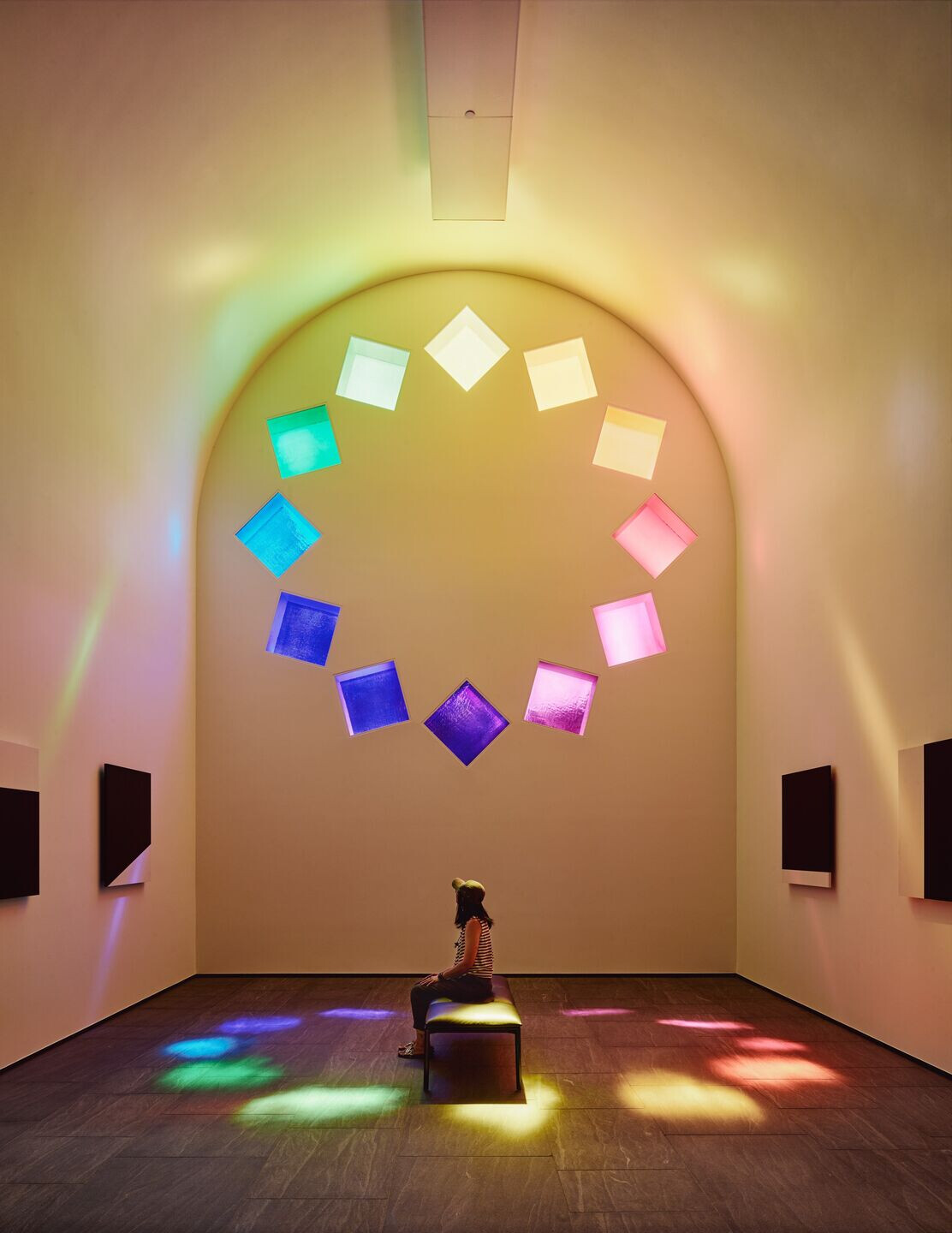Austin is a contemplative space for spiritual and non-spiritual people alike and calls on the power of art, abstraction, and light to touch the human soul. Originally conceptualized in 1986 and completed in 2018 after five years of meticulous design and construction, Kelly’s first and only building finally stands on the campus of The University of Texas at Austin. After Kelly’s passing in 2015, the project gained new significance as his final work.
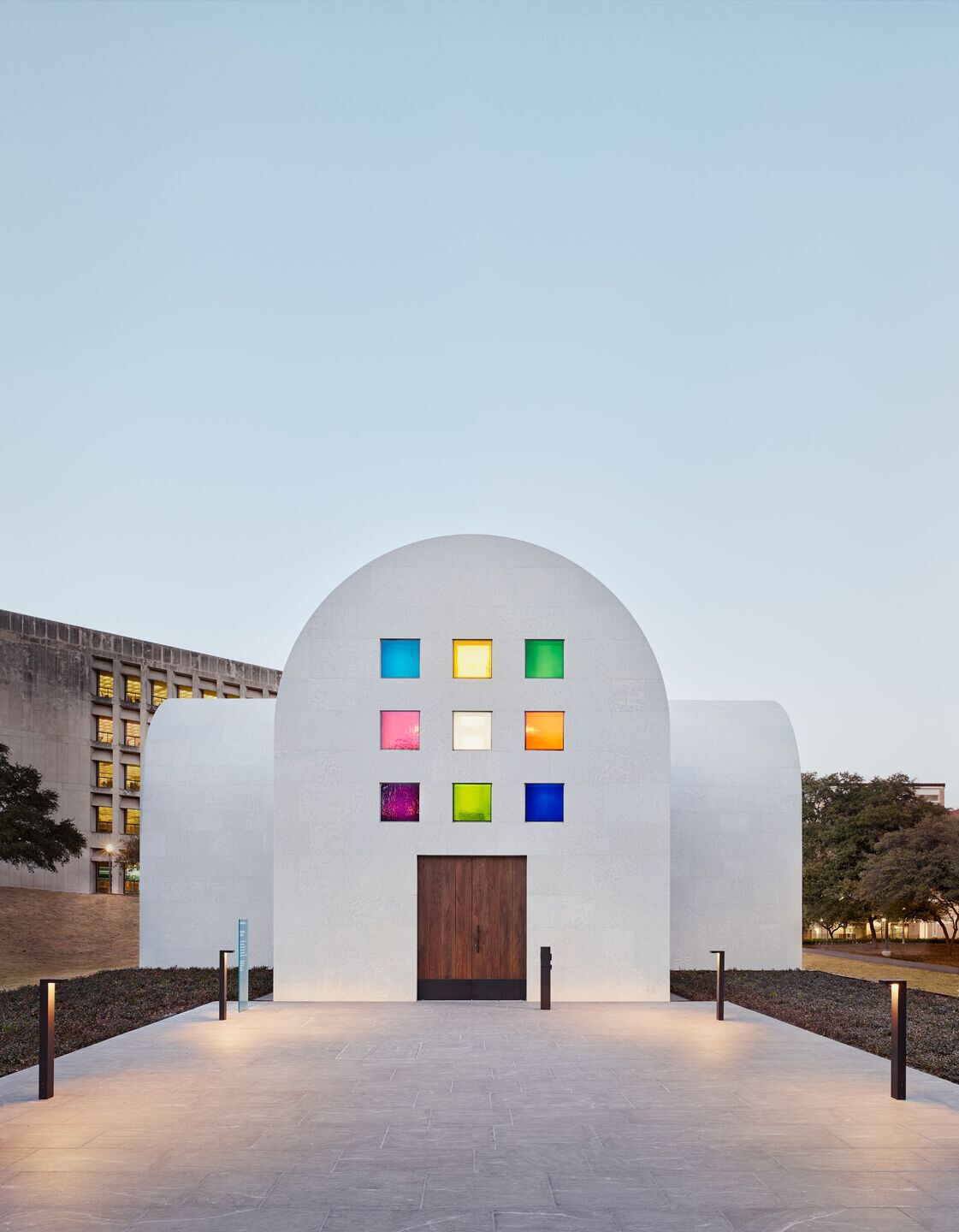
Overland leaned into both craft and technology to formulate inventive ways to work with Kelly during the preconstruction phase, given his residence in rural New York. This included hundreds of computer–generated renderings, 3D models, and mock-ups that were exacting in scale, proportion, joinery, and other details to convey the artist’s precise visualization of the building.

Originally, humble materials—stone, plaster, steel, and glass—came to life in the mind of Kelly, who was inspired by the Romanesque structures he encountered while studying art in Paris. Getting inside the mind of the artist was the primary challenge for the team—taking Kelly’s vision and turning it into a constructible design that could survive the Texas climate for generations to come.
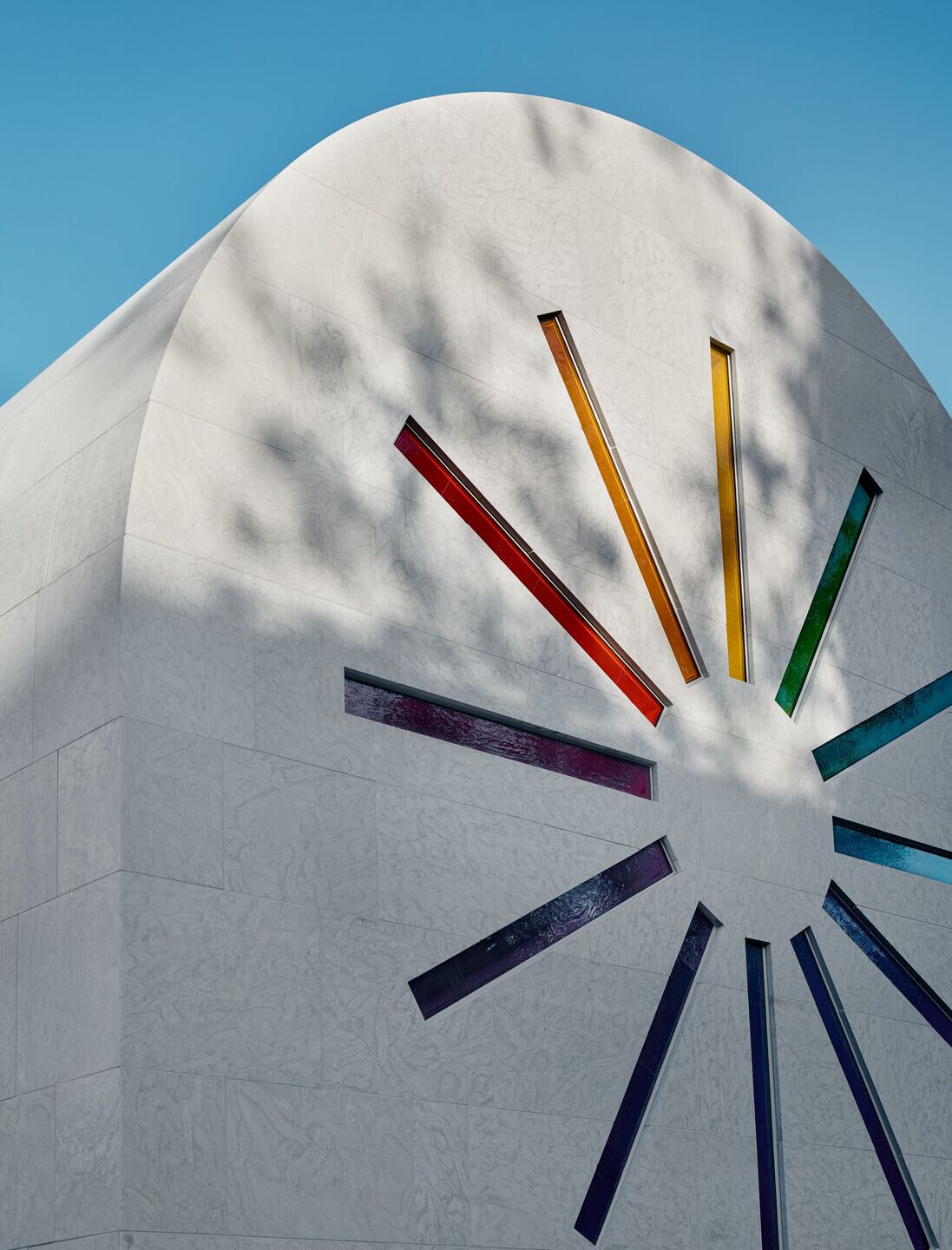
The exterior material of the chapel presented a particular challenge. Kelly envisioned the exterior to be smooth plaster, but Overland expressed concern that it would not do well in Texas’ extreme sun and heat and suggested impervious stone instead.

The 14 black and white reliefs representing Stations of the Cross were originally conceived tobe fabricated of painted steel. Overland suggested stone for the panels, and Kelly agreed, assuming the exact hues could be located. Through Overland’s international network of relationships, they were able to source black marble from Belgium that Kelly approved and connected with a quarry in Carrara, Italy that had been closed for more than 200 years to procure the same white marble used for Michelangelo’s Pietà.
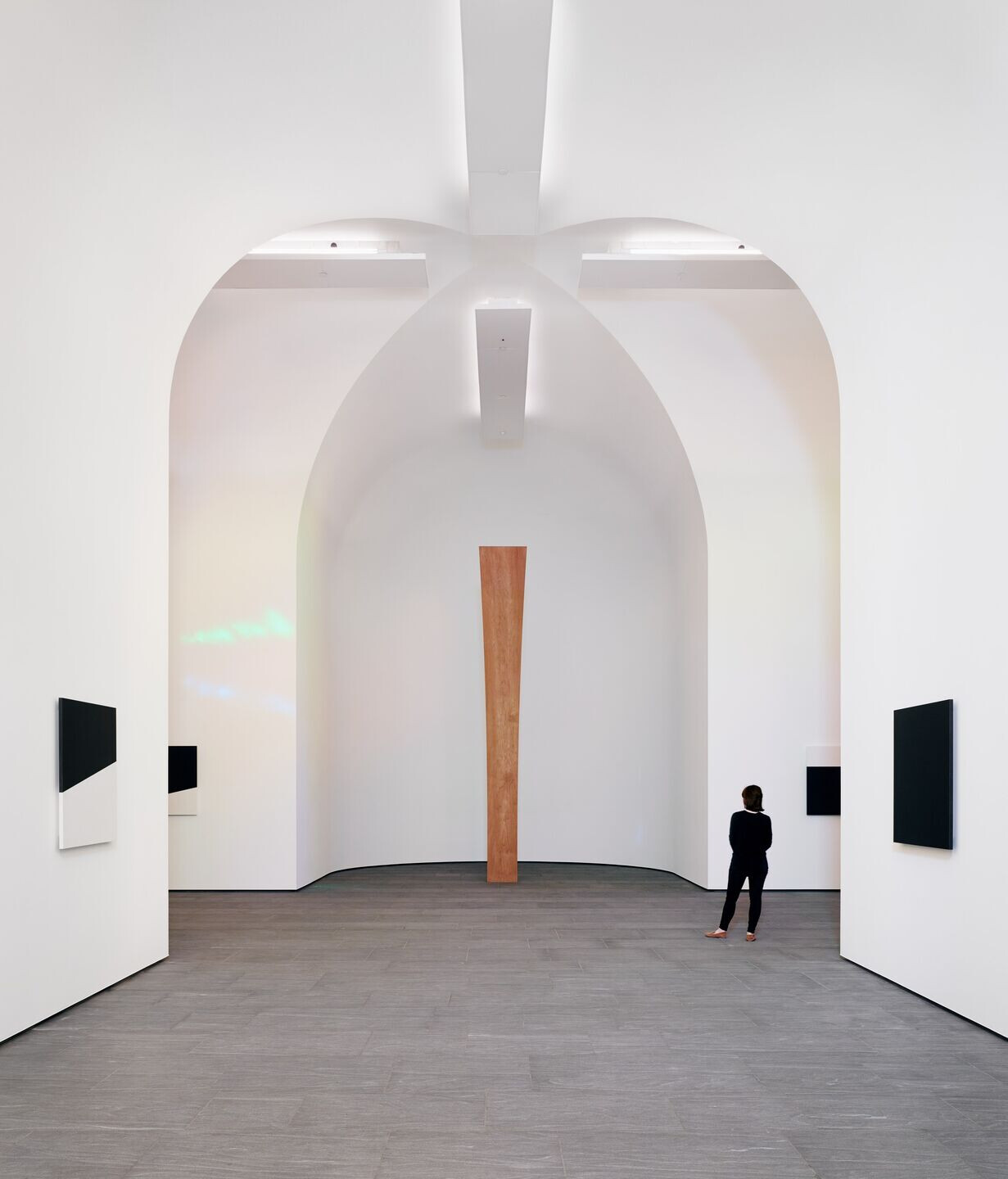
Kelly envisioned the entry doors were rendered in hefty steel, but as the design took form during conversations in his home and studio, Kelly said, “I’d like the doors to be made of something that feels and looks more like this,” resting his handson the ancient oak table where they were dining. A Texas Live Oak that had been removed from the campus and stored off-site was the perfect solution. Pieces of lumber from the tree were hand–selected and repurposed into the main entry doors, a full circle nod to Kelly’s respect of the natural world.
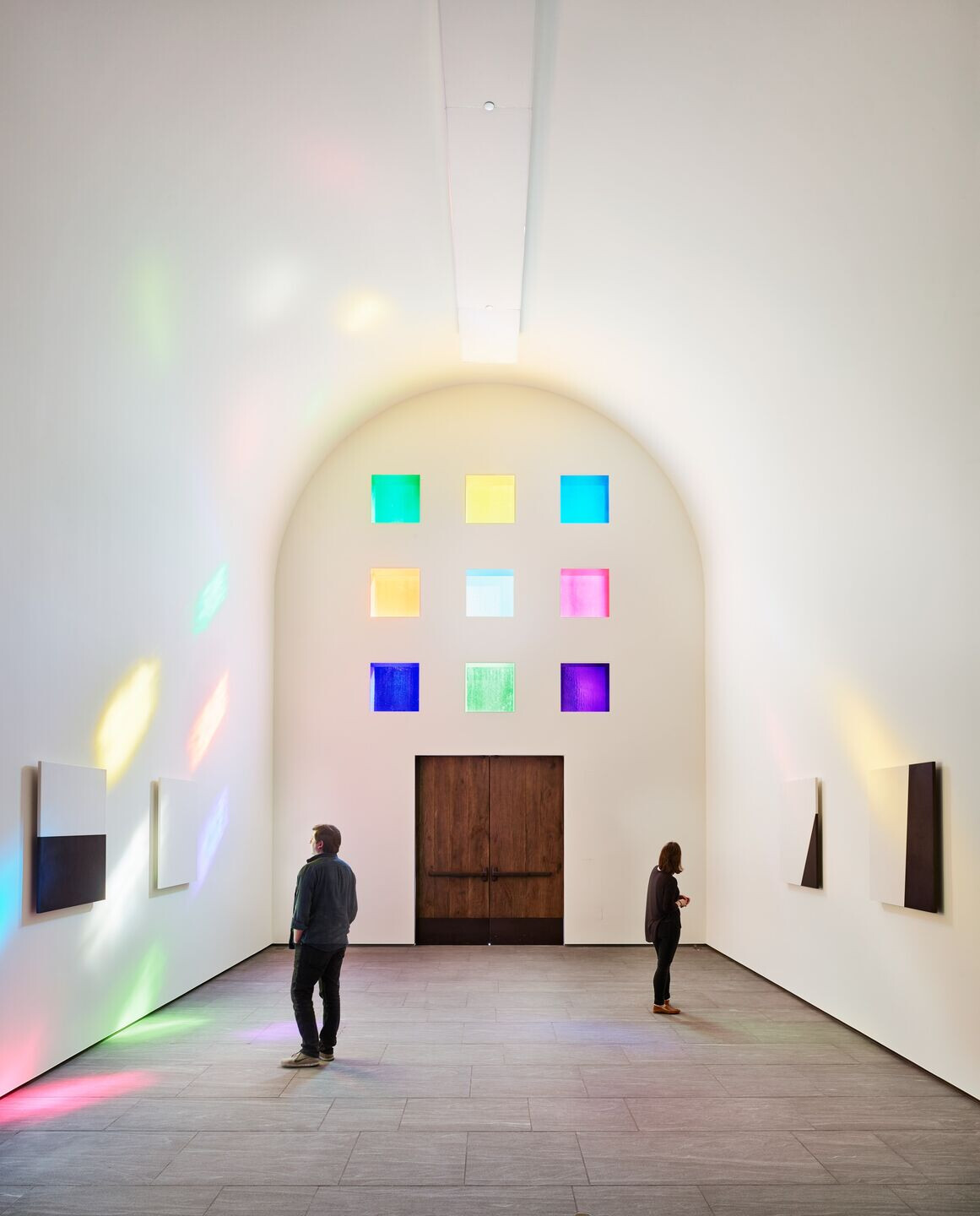
Its rainbow-inspired stained-glass windows create streams of color that change throughout the day, while 14 large-scale black and white marble panels,and signature soaring redwood totem, channel joy and reflection, an enduring legacy of Kelly and a gift of wonder to the world.
